Daily chlorhexidine gluconate (CHG) bathing reduces the risk of hospital-acquired infections

Many studies indicate that daily chlorhexidine gluconate (CHG) bathing reduces the risk of hospital-acquired infections” Vanhoozer et al (2018). Abstract: Many studies indicate that daily chlorhexidine gluconate (CHG) bathing reduces the risk of hospital-acquired infections. In this study, we found that patient perceptions can be a barrier to bathing practice, and many independent-care patients do […]
Long-term clinical outcomes of using taurolidine as lock solution
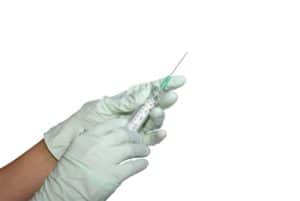
The aim of this study was to evaluate long-term clinical outcomes of our HPN cohort while using taurolidine as lock solution. In addition, we explored risk factors associated with CVAD-related complications” Wouters et al (2018). Abstract: BACKGROUND & AIMS: Central venous access device (CVAD)-related complications, such as central-line associated bloodstream infections (CLABSIs), CVAD-related venous thromboses […]
Intraosseous catheter deformation due to positioning patient for thoracostomy

Following removal the intraosseous catheter was noted to be deformed (Fig. 1). A chest radiograph taken prior to removal showed the correct insertion point in the proximal humerus with no evidence of local bony injury, but with a bend in the catheter located at the insertion site” Reid et al (2018). Extract: The intraosseous catheter […]
Y-site infusion compatibility of drugs administered in intensive care units

This review provides new reliable evidence about the physicochemical stability of drugs commonly used in the critical care setting” Castells Lao et al (2018). Abstract: OBJECTIVES: To gather all published information about the stability of drugs commonly used in Intensive Care Units (ICU); evaluate the methodology of published data; and generate a compatibility table. DESIGN: […]
Example of micafungin administered via an OPAT service

We evaluated the safety and efficacy of micafungin administered via the outpatient parenteral antimicrobial therapy (OPAT) service for the treatment of CPA” Otu et al (2018). Abstract: BACKGROUND: Intravenous micafungin has been reported as a treatment alternative in patients with chronic pulmonary aspergillosis (CPA) where long-term oral triazole therapy is unfeasible. OBJECTIVES: We evaluated the […]
Review of real-time dual-modal vein imaging system
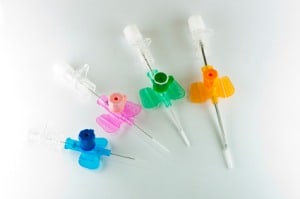
In this paper, we present a vein imaging system to combine reflectance mode visible spectrum images (VIS) with transmission mode near-infrared (NIR) images in real time. Clear vessel localization is achieved in this manner with combined NIR-VIS dual-modal imaging” Mela et al (2018). Abstract: PURPOSE: In this paper, we present a vein imaging system to […]
Extravasation treatment with multiple stab incisions and drainage

We have developed a technique of multiple stab incisions and drainage for the treatment of contrast extravasations” Raveendran et al (2018). Abstract: Extravasation of intravenous contrast agents in the hand and forearm during computed tomography scanning is rising with the use of automated pressure injectors. The main concern in such a situation is progression to […]
Animal model to teach ultrasound-guided central venous catheter insertion
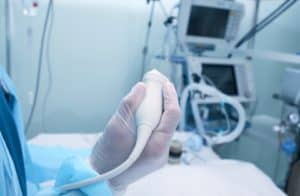
The aims of the study were to examine the utilization of an animal model and compare it with two currently used Blue Phantom central line models to determine whether an animal model provides good or better simulated conditions for the performance of UGCVC insertion” Hauglum et al (2018). Abstract: INTRODUCTION: Ultrasound-guided central venous catheter insertion […]
Upper extremity compartment syndrome following radial artery puncture

Acute compartment syndrome is the physiologic consequence of increasing pressures within an enclosed anatomic space; if left untreated, it can subsequently cause irreversible necrosis, nerve injury, and tissue damage. A number of iatrogenic causes have been reported in the literature; however, to the best of our knowledge, there are no prior reports of upper extremity […]
Blood culture contamination quality improvement project

The standard benchmark for blood culture contamination is 3%. Our aim with the quality improvement project was to reduce the contamination rate at our children’s hospital from a mean of 2.85% to
Full text review of OPAT administered ertapenem in India

While OPAT is an established clinical practice in the Western world, the concept itself is alien to patients in India as they prefer the security of hospitals to receive antibiotics over OPAT” Ramasubramanian et al (2018). Abstract: Outpatient parenteral antimicrobial therapy (OPAT) programs are becoming an increasingly popular trend in clinical practice as they offer […]
IV catheter lock solution significantly reduced the incidence of CLABSI

Central line associated bloodstream infections(CLABSI) often result from intraluminal microbial colonization and are associated with morbidity, mortality, and substantial costs. The use of antimicrobial catheter lock solutions may reduce the incidence of CLABSI” Rijnders et al (2018). Abstract: BACKGROUND: Central line associated bloodstream infections(CLABSI) often result from intraluminal microbial colonization and are associated with morbidity, […]
Salvaging central venous catheters in home parenteral nutrition

In the past, the standard of care to treat these infections required catheter removal. More recently, several studies have indicated that many CRBSI can be treated without removal of the catheter” Bonnes et al (2018). Abstract: PURPOSE OF REVIEW: Catheter-related blood stream infections (CRBSI) pose a significant risk to patients on home parenteral nutrition (HPN). […]
Taiwan must promote the central venous catheter bundle approach more effectively
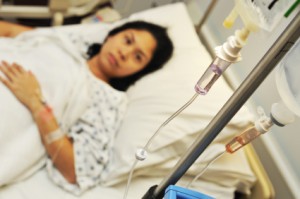
Despite recent efforts in Taiwan to reduce the risk and incidence of central venous catheter associated bloodstream infections (CABSI), the results as reported by the Taiwan Centers for Disease Control, when compared with the results achieved in the USA, indicate that Taiwan must promote the central venous catheter bundle approach more effectively” Sun and Chen […]
Septic shock related to central venous catheter infection results in fatal outcome

Catheter-related blood stream infection (CRBSI) is one of the most common intractable healthcare-associated infections because catheters can be easily contaminated by resistant bacteria, and is associated with a high mortality” Arai et al (2018). Abstract: BACKGROUND: Catheter-related blood stream infection (CRBSI) is one of the most common intractable healthcare-associated infections because catheters can be easily […]
Diagnosis of healthcare-associated infections in Serbian trauma patients

The aim of this study was to compare the US and the European HAI definitions in Serbian trauma intensive care unit (ICU)” Djuric et al (2018). Abstract: After three national point prevalence studies (PPS) of healthcare associated infections (HAI) conducted in Serbian acute care hospitals using US (CDC/NHSN) surveillance definitions, Serbia is about to switch […]
Description of Rapid Central Vein Assessment (RaCeVA)
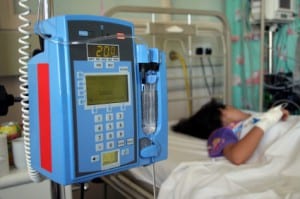
The ability to visualize underlying structures of the chest, neck, and upper/lower extremities provides for greater success, speed, and safety with all vascular access procedures” Spencer and Pittiruti (2018). Abstract: Ultrasound technology has revolutionized the practice of safer vascular access, for both venous and arterial cannulation. The ability to visualize underlying structures of the chest, […]
CLABSI prevention program for intensive care units

Evaluate the effectiveness of a prevention of infection following the introduction of new multifactorial strategies in the prevention program Central line-associated bloodstream infection (CLABSI) at ICU” Ordóñez Rufat et al (2017). Abstract: INTRODUCTION: The channeling of central venous catheters (CVC) is a technique used in intensive care units (ICUs) but it doesn’t come without the […]
Malposition of central venous catheter induced mediastinum hematoma

Central venous catheterization (CVC) is a common invasive procedure. Although it is a relatively safe procedure, severe complications occurred sometimes. One of the most serious complications is large vessel perforation” Chen et al (2018). Abstract: Central venous catheterization (CVC) is a common invasive procedure. Although it is a relatively safe procedure, severe complications occurred sometimes. […]
Translumbar hemodialysis long-term catheter in vascular access failure
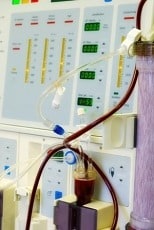
Vascular access (VA) in hemodialysis (HD) is essential to end-stage renal disease (ESRD) patients survival. Unfortunately, after some years in HD program, a significant number of patients may develop VA failure for many reasons” Moura et al (2018). Abstract: INTRODUCTION: Vascular access (VA) in hemodialysis (HD) is essential to end-stage renal disease (ESRD) patients survival. […]
Pediatric hypertonic saline use in emergency department

Hypertonic saline (HTS) is often used to manage cerebral edema and increased intracranial pressure (ICP) in children via creation of an osmolar gradient which promotes decreases in brain interstitial volume along the blood-brain barrier” Niknam et al (2018). Abstract: Hypertonic saline (HTS) is often used to manage cerebral edema and increased intracranial pressure (ICP) in […]
What are the late complications of totally implantable venous access ports

“The aim of this study was to assess the incidence rate and the risk factors for late complications associated with use of central totally implanted venous access devices (TIVAPs) in patients with cancer, and to devise nursing strategies to minimize late complications” You et al (2018).
Anticoagulation for the treatment of cancer-associated thrombosis

To perform a systematic review and network meta-analysis evaluating the efficacy and safety of low-molecular-weight heparins (LMWHs), vitamin K antagonists (VKAs), and direct-acting oral anticoagulants (DOACs) for the treatment of cancer-associated thrombosis (CAT)” Sobieraj et al (2018). Abstract: To perform a systematic review and network meta-analysis evaluating the efficacy and safety of low-molecular-weight heparins (LMWHs), […]
Ultrasound protocol to determine the upper extremity PICC location in neonates

To assess whether a limited ultrasound (US) scanning protocol to monitor the upper extremity peripherally inserted central catheter (PICC) location in neonates is feasible for experienced US operators” Motz et al (2018). Abstract: OBJECTIVES: To assess whether a limited ultrasound (US) scanning protocol to monitor the upper extremity peripherally inserted central catheter (PICC) location in […]
OPAT patient review with infectious diseases specialty intervention

Among privately insured individuals below age 65, ID consultation during OPAT is associated with large and significant reductions in the rate of ED admission and hospital admission in the 30 days after an index event, as well as lower total healthcare spending” Shah et al (2018). Abstract: BACKGROUND: Outpatient parenteral antimicrobial therapy (OPAT) can be […]
Verification of point-of-care international normalized ratio
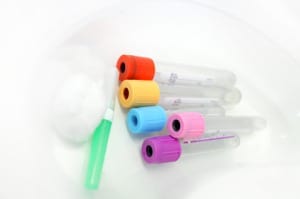
Comparing the capillary INR laboratory results to studies involving a venous specimen, the capillary specimen performed with equivalence. Thus, a capillary citrate specimen can be collected from the same finger-stick used to perform the POC INR for confirmation in the laboratory. This avoids the trauma of a venous collection in such a situation” Williams (2018). […]
Daily bathing with 4% chlorhexidine gluconate in intensive care settings

to investigate whether daily bathing with a soap-like solution of 4% chlorhexidine (CHG) followed by water rinsing (CHGwr) would decrease the incidence of hospital acquired infections (HAI) in intensive care settings” Pallotto et al (2018). Abstract: Objectives: to investigate whether daily bathing with a soap-like solution of 4% chlorhexidine (CHG) followed by water rinsing (CHGwr) […]
Simulation training ultrasound-guided central venous cannulation
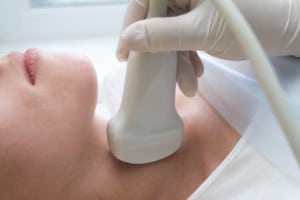
This study compared medical residents’ preferences for and performance of ultrasound-guided central venous access using the transverse, longitudinal, and oblique approaches” Caffery et al (2018). Abstract: BACKGROUND: Obtaining central venous cannulation of the internal jugular vein is an important skill for physicians to master. To our knowledge, no studies to date have examined residents’ preferences […]
Tunneled central venous catheters hemodialysis patient mortality and morbidity

We examined the association between catheter use for maintenance hemodialysis (HD) and mortality/hospitalization in a cohort of patients with prevalent HD” Chiu et al (2018). Abstract: PURPOSE: We examined the association between catheter use for maintenance hemodialysis (HD) and mortality/hospitalization in a cohort of patients with prevalent HD. METHODS: In this study, 70 HD patients […]
Iatrogenic pneumothorax secondary to central venous catheter insertion
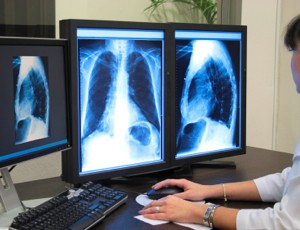
This article focuses on a subset of traumatic pneumothoraces known as iatrogenic pneumothorax, which is when the condition occurs secondary to an invasive procedure such as pulmonary needle biopsy (transthoracic and transbronchial), placement of a central venous line, nasogastric tube placement, or positive pressure ventilation” Ojeda Rodriguez and Hipskind (2018). Excerpt: Pneumothorax is the presence […]

